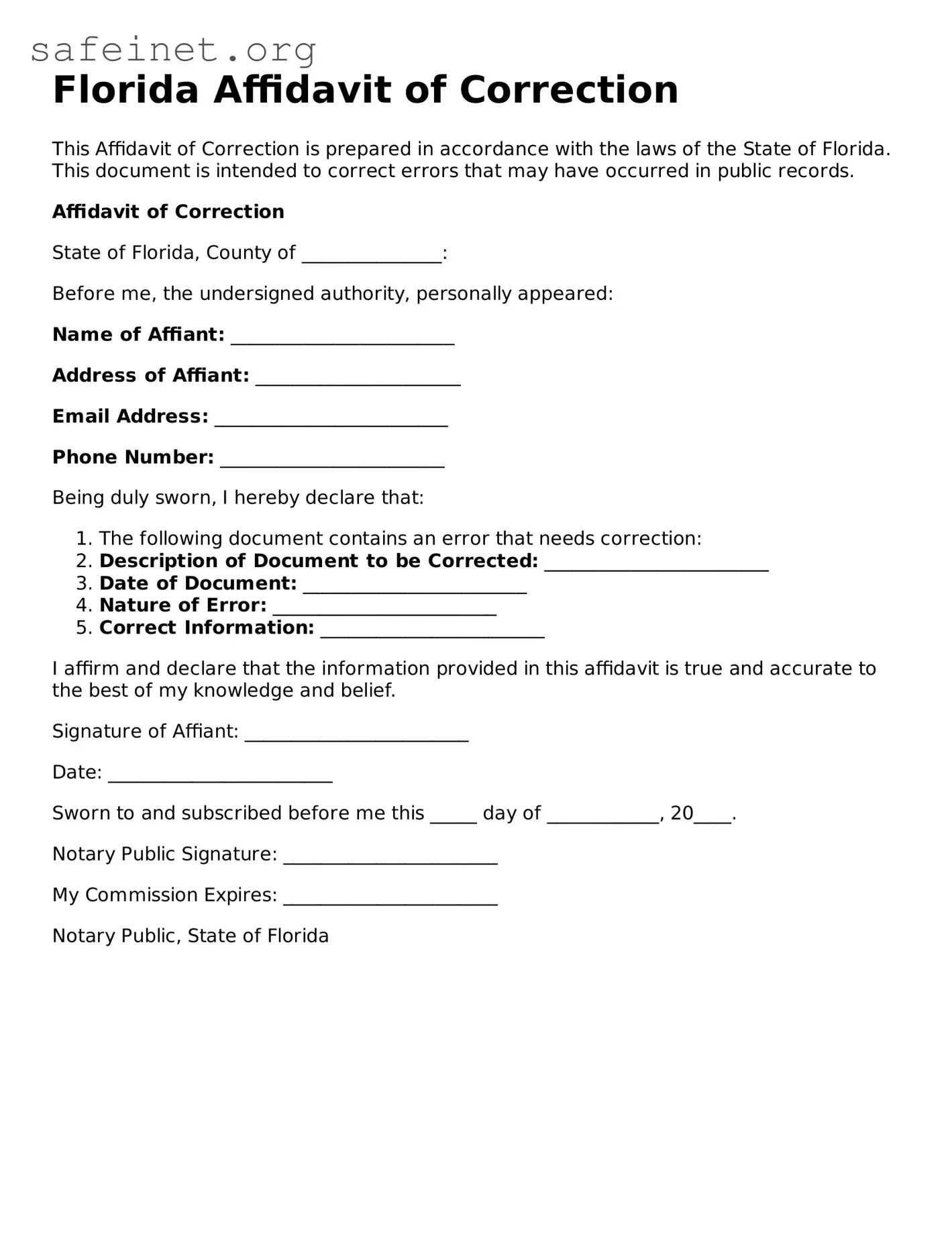What is an Affidavit of Correction in Florida?
An Affidavit of Correction is a legal document that allows individuals to correct clerical errors in official records or documents. These corrections may relate to mistakes in names, dates, or other details that were mistakenly recorded. In Florida, the Affidavit of Correction ensures that the public record accurately reflects the intended information.
Who can file an Affidavit of Correction?
Any individual or entity who has a vested interest in the document can file an Affidavit of Correction. This typically includes the person named in the document or their legal representative. It’s important that the filer has direct involvement with the record that needs correcting.
What types of errors can be corrected with this affidavit?
The Affidavit of Correction is useful for various clerical errors, such as misspelled names, incorrect dates, or wrong property descriptions. However, it cannot be used for substantive changes, such as altering the terms of a contract or changing the legal rights of parties.
How do I prepare an Affidavit of Correction?
To prepare an Affidavit of Correction, provide a clear description of the error that needs correcting and the intended correct information. Include the details from the original document, such as title, date, and any relevant legal descriptions, to ensure clarity and accuracy.
Do I need a notary to sign the affidavit?
Yes, an Affidavit of Correction must be signed in the presence of a notary public. This step verifies the identity of the person signing and adds legal credibility to the document.
Where do I file the Affidavit of Correction?
File the completed Affidavit of Correction with the same office where the original document is recorded. This is typically the County Clerk or the Department of Records, depending on the type of document and the county.
Is there a fee to file an Affidavit of Correction?
Yes, there is usually a filing fee associated with submitting an Affidavit of Correction. The fee may vary by county, so it’s a good idea to check with the local office for the exact amount and acceptable payment methods.
Will I receive a copy of the corrected document?
Once the Affidavit of Correction is processed, you can request a copy of the corrected record. This may involve an additional fee. Keeping a copy of the corrected document for your records is advisable.
Can I make multiple corrections in one affidavit?
Generally, it is best to file separate Affidavits of Correction for each individual error. However, if the errors are closely related and can be clearly stated in one document, some counties may allow multiple corrections in a single affidavit.
What if I need to correct a mistake on a legal contract or deed?
For significant changes, such as those affecting legal rights or obligations in a contract or deed, you may need to file a more comprehensive document, like a formal amendment or a new deed. Consulting with a legal professional is often recommended in such cases.
